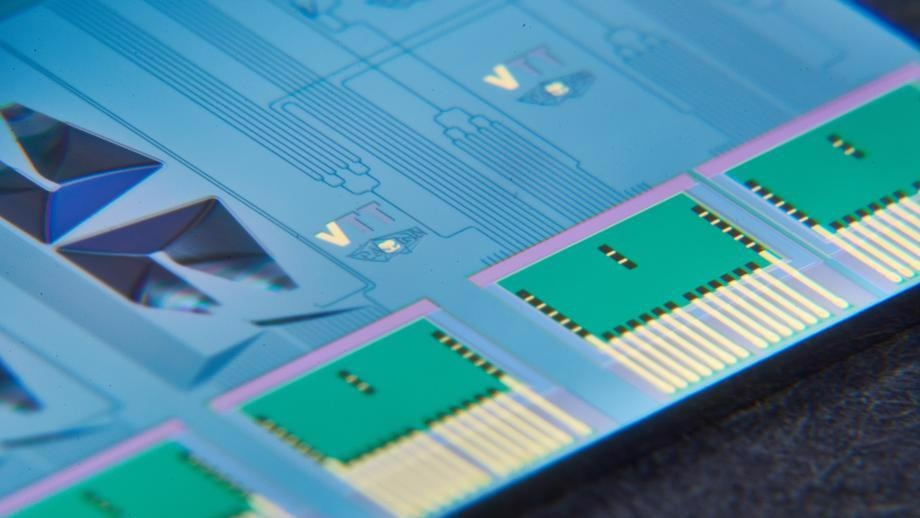Reviewed by Alex SmithMay 9 2022
VTT is Finland’s major developer of silicon photonics. Silicon chips’ fast speed, energy efficiency and minuscule size can help a wide range of applications, from medical to autonomous transportation.

Image Credit: VTT Technical Research Centre of Finland
Consider being in the furthest reaches of Lapland on a November night when there are no electric lights, cell phones, or televisions. In the long term, it is not much fun. Life would be bleak without light, even more so without power. It would also be unproductive, despite the fact that it could feel restful at times.
Light is made up of electric and magnetic forces that move in perfect harmony. Photonics, sometimes known as the science of light, is a branch of technology that employs photons for tasks such as data transfer.
The symbiotic relationship between electricity and light is becoming increasingly crucial in the digital culture. Laser chips use energy to create light pulses that are so brief and dense that they can transmit the data content of many HD films through an optical fiber as thick as a strand of hair in one second.
In the Future, Data will be Processed Directly Using Light
The technical heart of today’s and tomorrow’s information society rests in tiny integrated circuits, or ICs, which throbs within sports watches and computers. Data centers, which are already considerably larger than typical factories, are crammed with millions of ICs, without which humans would not have the internet.
Even today, extensive fiber-optic networks deliver light into data centers and cell phone network base stations.
Thus far, the majority of fiber cable transmitters and receivers have been basic light signal transmitters and receivers that convey messages via copper cables to the electronic ICs that handle the real data processing.
Light signals will become more proximate to those ICs in the future, and eventually, a significant portion of real data processing will be conducted using light rather than electricity. Light increases data transfer speed and energy efficiency, which is critical for the development of the information society and the entire world.
The direct use of photons in digital and quantum computing and analog signal processing has become a significant study field.
Silicon Photonics Technology Developed by VTT Lends Itself to a Range of Applications, from Medicine to Autonomous Transport
Silicon photonics (SiPh) can be utilized for a variety of applications and to provide long-term growth.
At VTT, investigation, and development of SiPh and photonic integrated circuits (PICs) are conducted. Advantages of SiPh include fast component speed and energy efficiency, as well as the diminutive size of PICs. Rather than a cubic meter-sized piece of equipment, a gadget the size of a fingertip can be utilized.
At VTT, the development of SiPh in projects including data transfer, healthcare and smart transportation is advancing. For example, they have been creating SiPh suitable for sensors that let users assess their own blood glucose or alcohol level, among other things, in collaboration with Rockley Photonics.
Tiny sensors can be worn as smart garments or watches, providing wearers with incredibly fascinating data.
VTT is also using the technology to build smart transportation solutions. SiPh is utilized in the development of laser radars, allowing vehicles to measure their surroundings in 3D without moving mirrors or other similar components.
In other words, laser radars have the potential to increase traffic safety while also enabling self-driving automobiles. They can also be used to measure the surroundings using robots or drones.
Microelectronics developers are rapidly incorporating photonics in the symbiotic relationship of electricity and light. Similarly, it is time for photonics to learn from the success story of ICs.
By incorporating photonics with PICs, the advancement of present technologies and the generation of new scientific, technical, and business potential can be made possible. VTT does not yet recognize all the possibilities that this technology could be applied to. That is an intriguing concept on its own.
Finland boasts unrivaled expertise in photonics and SiPh, as well as microelectronics and quantum technologies. However, success in the worldwide market and competitive cutting-edge research necessitate expenditures on both sector training and research equipment.
Finland should concentrate on its own capabilities in SiPh based on micrometer-scale waveguides. It offers distinct benefits, significant synergy with other Finnish microsystem technologies (MEMS, quantum technology), and a wide range of applications.
SiPh does indeed have a great future in Finland, assuming the confidence to invest in the subject is present.